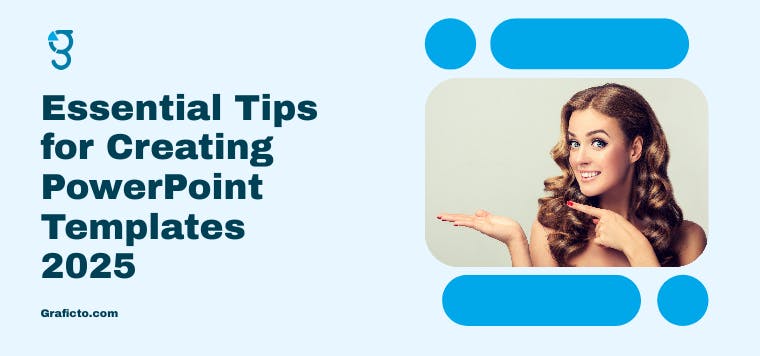Understanding the Basics of PowerPoint Templates
You'll want to be sure you know what a PowerPoint template is before you dive into the creation process. Simply put, a template is a pre-designed set of slides you can use as a base for new presentations. These templates may include layout, colors, typestyles, effects, background styles, and even content.
Benefits of Using a PowerPoint Template
- Consistency: Using templates will help keep the uniformity in your slide deck.
- Save Time: Begin with a template and do not think you have to start from scratch each tome.
- Professional Look: Great templates convey a professional image by using stylisticly sound designs.
How to Create a Custom PowerPoint Template
Several steps are needed to develop a custom PowerPoint template. Let’s break it down:
Step 1: Start with a Blank Presentation
Open PowerPoint, create and begin a new presentation, and then do the following:. That's a blank canvas on top of which you start to build your template.
Step 2: Open the Slide Master
The Slide Master is the place to design your template. 1. Click the "View" ribbon and choose "Slide Master". It will show you all the slide layouts that are available to you.
Step 3: Design the Slide Master
Here you can personalize the overall slide and its layouts. Everything you do to the Slide Master will be inherited by all slides that use that particular master. Think on the following:
- Background: Select a background theme which is fitting with your theme/style.
- Fonts: Choose fonts that are easy to read and suit the style and mood of your presentation.
- Colors: Find colors you like and match your brand or topic.
Step 4: Customize Slide Layouts
Various layouts of the Slide Master have different roles. Customise layout as you like:
- Title Slide: Create an exciting title slide with a prominent title and room for subtitle s or a logo.
- Content Slides Change slides for text, images, charts and graphs.
- Section Headers: Employ section headers to organize new sections in your presentation.
Step 5: Save Your Template
When you are happy with the graphics save your work as a PowerPoint Template. Click on “File” followed by “Save As” and select “PowerPoint Template (. potx)” from file format categories.
Tips for Designing an Effective PowerPoint Template

This infographic was created using Graficto.
Keep It Simple
Simplicity is key in design. Keep it simple, no frills with a clean, minimal presentation of your content. Utilize whitespace to make your slides appear clean and polished.
Use High-Quality Images
Add High-Def images that speak to your message. Blurry or pixelated picture is not recommended as they may lower the quality of your presentation.
Be Consistent with Colors and Fonts
A single font and color theme add to the look as one. Use a restricted color scheme and 1-2 different types of font to keep your slides consistent.
Make It Versatile
Create your template to be flexible to a variety of presentations. This means that you should include a range of layouts that can support text-heavy image-heavy, and mixed content slides.
Using PowerPoint Theme Editor
PowerPoint Theme Editor is a very powerful tool that allows to complete customize your theme to better fit with the style of your presentation. Here’s how you can use it:
Accessing the Theme Editor
Click on the "Design" tab and select "Variants." Then choose "Customize Colors" or "Customize Fonts" to change your theme.
Customizing Colors
Design your hands with custom colors that match your brand or presentation subject. Use the editor to play with colors for text, backgrounds, accents, and more.
Customizing Fonts
Select fonts that are easy to read and reflect the tone of your presentation. You can set default fonts for your headings, and for your body text, using the Theme Editor.
Testing Your Template
When you are done, try building a new presentation using your template. Make sure all of the elements look the way they’re supposed to look. Try out various slide layouts to make sure they work.
Conclusion
While it might take a little effort to build a PowerPoint template at the start, it can be well worth it later on. A great template not only enhances your productivity but it allows all of your presentations to look the same and professional. Follow these tips in crafting a template that will make your PowerPoint presentations memorable.
By following these steps, and using PowerPoint’s design tools if you wish, you can customize a template that suits your requirements and impresses your audience. Happy presenting!


